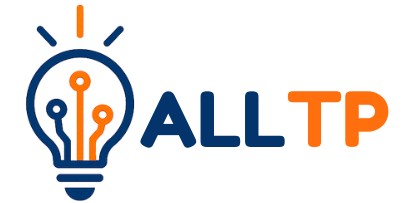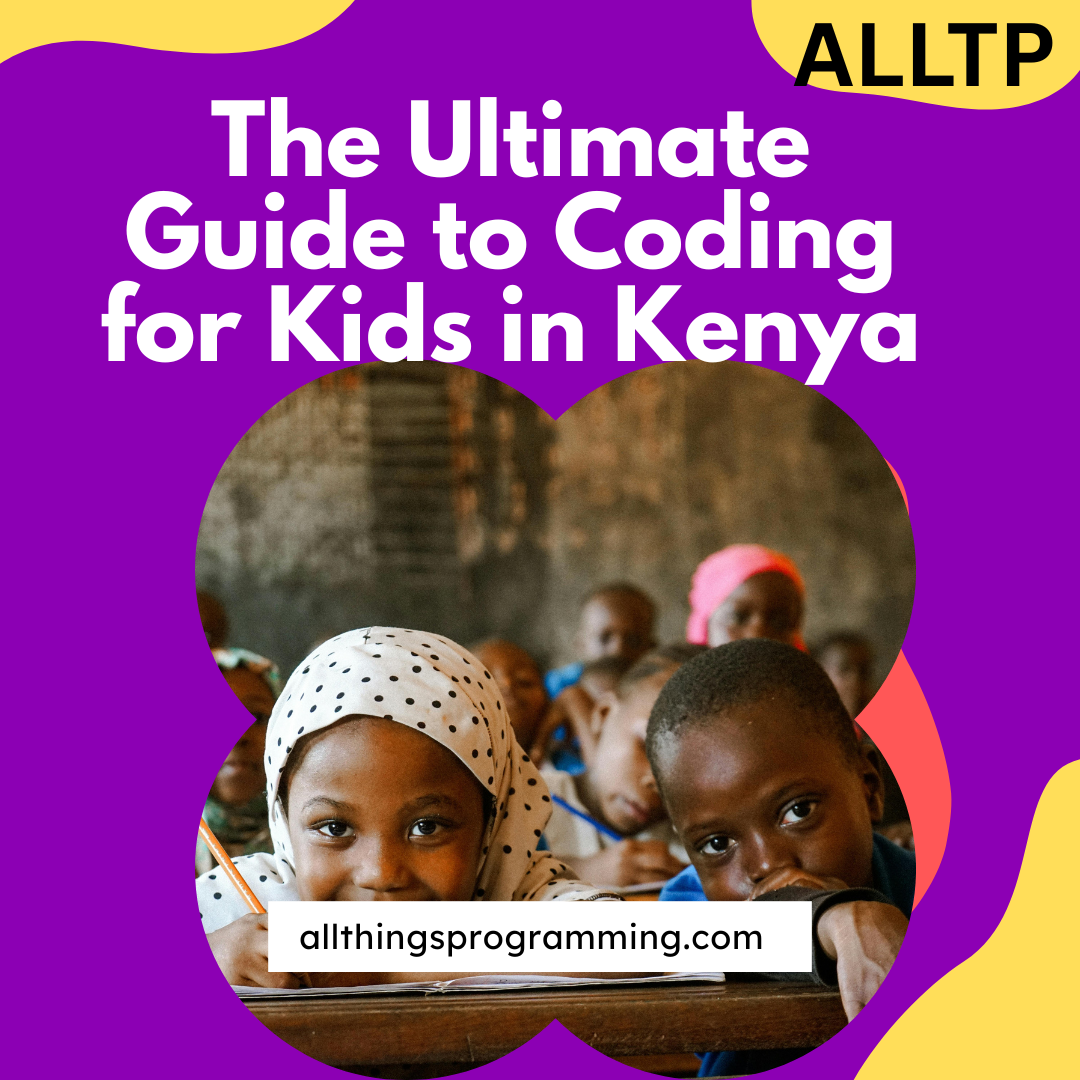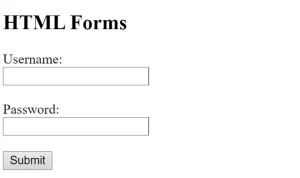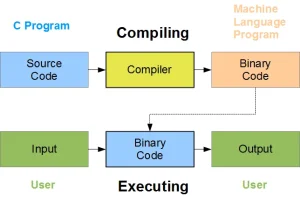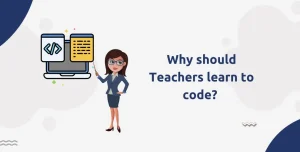In today’s rapidly evolving world, technology is no longer just a tool, it’s the foundation of the future. From smartphones and self-driving cars to smart farms and digital banking, technology is reshaping how we live, work, and solve everyday problems. At the core of this transformation is coding, the language that powers nearly every innovation we interact with.
For children, learning to code isn’t just about using computers; it’s about understanding how technology works and becoming creators rather than passive consumers. Coding sharpens problem-solving skills, encourages creativity, and builds confidence. It equips young minds with foundational abilities that are essential across modern careers, from medicine and agriculture to finance and education.
Give your child a head start in the digital age. Enroll them today at All Things Programming, a top-rated coding school for kids. Whether they’re 6 or 16, our fun and engaging programs in Scratch, Python, robotics, and web design will help them build real skills for tomorrow’s tech-driven world. Coding for kids is more than just an activity, it’s an investment in their future.
Why Coding Is a Critical 21st-Century Skill
1. The Growing Demand for Tech Talent – Globally and in Kenya
In today’s digital economy, technology powers everything from mobile banking and online learning to smart farming and e-commerce. As a result, the demand for skilled tech professionals is rapidly rising. In Kenya, the government’s Digital Economy Blueprint outlines a clear vision for transforming the country into a regional tech hub. Local startups, international companies, and even NGOs are all seeking talent in areas like software development, web design, and data science.
According to the Kenya ICT Authority, over 100,000 digital jobs are projected to be created annually, making coding not just a useful skill but a gateway to future employment. This shift means children who learn coding today will be better equipped to take on high-paying, meaningful work tomorrow.
2. Coding Builds Skills Beyond the Keyboard
Learning to code isn’t just about writing lines of code, it’s about thinking logically, solving problems creatively, and breaking down big challenges into manageable steps. These are skills every child needs, whether they become programmers or pursue other careers. Coding also improves focus, patience, collaboration, and even math and language comprehension.
When Kenyan kids code, they’re learning how to think critically and independently, skills that align perfectly with Competency-Based Curriculum (CBC) goals.
3. From Consumers to Creators
Most kids today interact with technology daily, watching YouTube videos, playing mobile games, or using educational apps. But what if they could build their own games, animations, or apps? That’s the power of learning to code.
Early exposure to programming turns passive tech users into active creators. It gives kids agency over the digital world around them. Instead of asking, “How does this app work?” they begin to think, “How can I build one like this?”
This shift not only boosts confidence but opens up a world of opportunities for innovation, self-expression, and entrepreneurship, especially for Kenyan children in both urban and rural areas who want to shape the future of their communities through tech.
Why Kids in Kenya Should Learn Coding
1. Enhances Critical Thinking and Problem-Solving
Coding teaches children how to break down complex problems into smaller, manageable parts. It encourages logical thinking and structured decision-making skills that are essential not only in tech but also in everyday life. Whether a child is debugging a game in Scratch or trying to automate a simple task, they are building mental muscles for critical thinking and resilience.
2. Boosts Creativity and Innovation
Far from being just a technical activity, coding is a powerful creative outlet. Children can use it to design their own stories, animate characters, build games, or create apps that solve real-life problems. This kind of hands-on creation fuels imagination and innovation, exactly what Kenya needs to become a leading digital economy in Africa.
3. Opens Up Future Career Opportunities
Kenya’s tech industry is rapidly expanding, with Nairobi often referred to as “Silicon Savannah.” From fintech companies like M-PESA to health tech startups and e-commerce platforms, there is an increasing demand for developers, data analysts, and digital creators. Kids who start learning coding now will be well-positioned to take up these future jobs or even become tech entrepreneurs themselves.
4. Promotes Digital Literacy for the Modern World
In a world where everything is becoming digital, understanding how technology works is essential. Coding equips kids with the digital literacy they need to participate fully in modern life whether it’s through school projects, online safety, or adapting to new technologies. It ensures they’re not left behind in a fast-changing, tech-driven society.
5. Real Examples of Young Kenyan Coders
Kenya is already home to inspiring young tech talents. For instance:
- Tevin Kimathi, a teenager from Nyeri, built a simple weather app using open data and Scratch, gaining national attention.
- Dorcas Owino, through the LakeHub Girls Coding Program in Kisumu, has empowered hundreds of girls to build websites and mobile apps from the age of 10.
- The KidsComp Camp in rural Kenya trains children in ICT and coding using solar-powered laptops, turning students into creators and problem-solvers for their own communities.
These examples show that coding is not limited to Nairobi or elite schools, every child in Kenya has the potential to become a tech innovator.
Best Age to Start Coding
Introducing Coding from as Early as 6 Years Old
The best time to introduce coding is as early as age 6. At this stage, kids are naturally curious, eager to explore, and comfortable experimenting without fear of failure, making it the perfect time to begin learning how to code. With age-appropriate tools and visual programming platforms, even young learners can understand basic coding concepts like sequencing, loops, and logic.
Early exposure not only makes coding fun but also lays a strong foundation for deeper learning in later years.
Age-Appropriate Coding Progression
Ages 6–9: Visual/Block-Based Coding
At this stage, children learn best through visuals and play. Platforms like Scratch, Code.org, and Tynker use colorful blocks that snap together to form code, helping kids create animations, games, and interactive stories. These tools teach essential programming logic in a simple, engaging way, perfect for early learners.
- Recommended tools: Scratch, Kodable, Lightbot, Code.org (Pre-Reader & Grades 2–5)
- Key skills: Sequencing, loops, conditional logic, problem-solving
Ages 10–13: Intermediate Coding
As children grow older and their reading, typing, and logical thinking skills improve, they can begin exploring text-based coding alongside visual tools. At this stage, they can learn the basics of HTML and CSS for building websites, and even start with Python using simple projects and games.
- Recommended tools: Scratch (advanced projects), Thunkable, Python with Turtle, HTML/CSS editors
- Key skills: Web design, app development basics, debugging, creative coding
Ages 14–16: Advanced and Real-World Projects
Teenagers are ready to dive deeper into professional programming languages and real-world problem-solving. They can build websites using JavaScript, create Python-based automation tools, explore robotics, and even design mobile apps. This is the age where coding can become a serious interest or even a future career path.
- Recommended tools: Visual Studio Code, Replit, Arduino kits, GitHub for collaboration
- Key skills: Full-stack development basics, version control, robotics, AI exploration, entrepreneurship
With the right guidance and resources, kids in Kenya can smoothly transition through these stages and become confident, independent coders ready for the digital world.
Start your child’s coding journey today with All Things Programming – Kenya’s trusted Coding Kenya initiative. From Scratch for beginners to Python and robotics for advanced learners, we offer hands-on programs that grow with your child’s skills. Empower your child to build, create, and lead in tomorrow’s tech-driven world.
Popular Coding Platforms and Tools for Kids
Choosing the right tools is essential to keep kids engaged and learning at the right level. Fortunately, there are several child-friendly platforms that introduce coding in fun, interactive, and age-appropriate ways. Here are some of the most effective and accessible coding platforms for kids in Kenya.
1. Scratch (Ages 6–12)
Scratch, developed by MIT, is one of the most widely used coding platforms for kids. It uses drag-and-drop coding blocks that allow children to create animations, games, music, and interactive stories without writing any code.
- Best for: Absolute beginners
- Learning style: Visual and interactive
- Access: Works online and offline with the Scratch desktop version
- Local use: Already being used in many Kenyan schools and bootcamps
2. Code.org and Tynker
Both Code.org and Tynker offer gamified coding lessons that keep kids motivated with puzzles, stories, and challenges featuring familiar characters like Minecraft and Angry Birds.
- Best for: Ages 5–13
- Key features: Self-paced lessons, progress tracking, teacher tools
- Internet: Requires some data, but can preload lessons for offline use
- Local relevance: Code.org supports Kenyan educators through global partnerships
3. MIT App Inventor
This platform helps older kids and teens build fully functional Android apps using block-based coding. It’s a great way to transition from visual coding into real-world development.
- Best for: Ages 12+
- Skills learned: App logic, UI/UX design, mobile functionality
- Access: Online tool with downloadable apps
- In Kenya: Used in STEM hubs and mobile development workshops
4. Python with Turtle Graphics
Python is one of the world’s most popular programming languages, and Turtle Graphics makes it fun for kids. They can draw shapes, patterns, and animations while learning Python syntax in a playful way.
- Best for: Ages 11–16
- Transition tool: From blocks to real code
- Device: Lightweight; can run on most laptops, including refurbished ones
- Relevance: Introduces kids to real coding used in the workplace
5. Kenyan-Friendly Tools That Work Offline or With Limited Data
Internet access is still a challenge in many parts of Kenya, but several solutions can help overcome that barrier:
- Scratch Desktop: Download and use offline
- Khan Academy (Offline Version): Offers basic computer science lessons
- Raspberry Pi Kits: Affordable mini-computers that work without the internet
- Offline coding games and books: Like “Hello Ruby” or “CS Unplugged” activities
These options ensure that even kids in rural or low-connectivity areas can start learning coding skills early.
With these platforms, Kenyan children can learn to code in a way that’s fun, accessible, and aligned with their age and learning style.
Coding Curriculum Options in Kenya
Kenya offers a growing variety of ways for children to learn coding, both inside and outside the classroom. Whether your child lives in Nairobi, Kisumu, or a rural area, there are increasingly accessible pathways to tech education. Below are the key formats of coding learning available to Kenyan kids:
1. Formal and Informal Learning: Online vs In-Person Classes
Online Learning
Online platforms allow kids to learn from anywhere with an internet connection. Many parents in Kenya are enrolling their children in virtual coding classes that offer flexibility and affordability.
- Examples: Code.org, Scratch, Khan Academy, Coursera for Kids
- Pros: Learn at your own pace, wide course selection
- Cons: Requires reliable internet and a computer or tablet
In-Person Classes
For hands-on support and social learning, physical coding classes are ideal. These are offered by local tech academies, coding schools, or community tech hubs.
- Examples: eMobilis, AllThingsProgramming, TechKidz Africa
- Pros: Direct mentorship, peer collaboration, structured learning
- Cons: Limited to urban areas, may have higher costs
2. Extracurricular Coding Clubs in Schools
Some private and CBC-aligned public schools have started integrating coding clubs and ICT clubs as part of extracurricular activities. These clubs expose children to coding projects in a fun, collaborative environment.
- Activities: Building games in Scratch, robotics challenges, web design basics
- Benefit: Encourages teamwork, leadership, and innovation
3. After-School Programs and Holiday Bootcamps
These are popular among working parents who want their kids to spend their after-school hours productively. Bootcamps offer focused, intensive learning during school holidays or weekends, usually tailored to specific age groups or coding levels.
- Offered by: All Things Programming, Africa Code Week partners, Ubunifu College (Teens)
- Focus: Game development, mobile apps, Python basics, robotics, AI for teens
- Structure: Project-based, often with a certificate at the end
4. Local Initiatives Promoting Coding for Kids
Kenya is home to inspiring grassroots programs that bring coding to underserved communities:
- KidsComp Camp: A mobile coding initiative using solar-powered laptops to teach ICT and coding in rural Kenya.
- STEM Impact Center: Based in Nairobi, focuses on robotics and coding skills for school-going children through workshops and innovation labs.
- All Things Programming: The best coding school with programs for ages 6–16, using a child-centered, project-based approach that nurtures creativity and problem-solving.
With a combination of online platforms, school clubs, bootcamps, and community-led programs, children in Kenya have more ways than ever to get started in coding, no matter their background.
Best Coding Schools and Programs in Kenya
If you’re looking to enroll your child in a structured, high-quality coding program, Kenya has a growing number of tech schools offering courses tailored for kids and teens. These programs combine fun, mentorship, and real-world tech skills. Below are some of the top institutions, each offering unique strengths, but if you want the best overall experience, AllThingsProgramming stands out as the top choice.
AllThingsProgramming (Recommended First Choice!)
AllThingsProgramming is a child-centered coding school based in Nairobi that offers beginner to advanced programs for kids aged 6 to 16. Their teaching style is project-based and hands-on, helping children learn by building real apps, games, websites, and even exploring robotics. With a focus on creativity, confidence, and critical thinking, this school provides an excellent foundation for young tech minds.
- Programs: Scratch, Python, web design, game development, robotics
- Ages: 6–16
- Teaching Mode: online options available
- Fees: Affordable tiered pricing by age group and learning level
- Why Choose It? Friendly instructors, personalized learning, CBC-aligned, and excellent reviews from parents.
Give your child a head start, enroll with AllThingsProgramming today and unlock their full tech potential.
AkiraChix – Nairobi (Girls Only)
AkiraChix focuses on empowering girls and young women through technology education. While their core program targets older students (ages 17+), they also run outreach programs for girls in secondary schools, introducing them to coding and innovation.
- Focus: Tech training for girls
- Ideal for: Teen girls with interest in software development
- Location: Nairobi
TechKidz Africa
TechKidz Africa runs weekend and holiday tech camps for children, focusing on fun and creativity through digital storytelling, coding, and robotics. Their programs are ideal for kids just starting out in tech.
- Programs: Scratch, robotics, mobile app design
- Ages: 7–14
- Locations: Nairobi, Mombasa, and other cities during holiday camps
Ubunifu College – Nairobi
Ubunifu College offers teen-focused programs in software development, graphic design, and game development. While their advanced courses are mostly for youth aged 16+, they occasionally run coding bootcamps for teens starting at age 13.
- Best for: Older teens exploring career paths
- Programs: Full-stack development, game creation
- Location: Nairobi
eMobilis Tech Institute – Nairobi
eMobilis is known for its adult and youth coding courses, but they also offer introductory coding workshops for high schoolers. Their programs are ideal for teens preparing for tech careers or entrepreneurship.
- Focus: Software engineering, mobile apps
- Best for: Teens 14+ with strong interest in ICT
- Location: Nairobi (with regional outreach)
Kenya has options for every age and interest but if you’re looking for the most comprehensive, child-first coding experience, we highly recommend All Things Programming. Secure your child’s place in the digital future with us.
How Parents Can Support Their Child’s Coding Journey
Whether your child is just getting started with Scratch or already experimenting with Python, parental support plays a vital role in their success. You don’t need to be a tech expert to help; just a little encouragement, the right tools, and a supportive mindset can make all the difference.
1. Create a Tech-Positive Home Environment
Help your child see technology as a tool for creation, not just consumption. Set up a quiet, distraction-free corner where they can focus on learning or building projects. Celebrate their progress, no matter how small, whether it’s creating a simple animation or debugging a tricky game.
Let them talk about what they’re working on, and be curious even if you don’t understand the code. Your interest alone can boost their motivation.
2. Encourage Practice Through Projects and Play
Learning to code should be fun! Encourage your child to build projects that interest them, like a quiz about animals, a mini website for their favorite sport, or a simple game.
Platforms like Scratch and Code.org make this easy, and many children thrive when their learning feels like play. You can even suggest challenges or friendly competitions with siblings or friends.
- Tip: Help them showcase their work to friends or family to build confidence and pride.
3. Balance Screen Time: More Learning, Less Scrolling
Not all screen time is equal. While entertainment (like YouTube or TikTok) should be limited, learning time should be encouraged and scheduled. Consider setting “coding hours” in the week, just like you’d schedule reading or homework.
Make sure your child takes regular breaks and doesn’t sit too long, but don’t feel guilty about increased screen time when they’re actively learning and creating.
4. Invest in Affordable Tech Gadgets
You don’t need to buy a brand-new laptop for your child to start coding. Many Kenyan families are using budget-friendly options to get their kids started:
- Used or refurbished laptops: Great for running Scratch Desktop, Python, or web development tools
- Raspberry Pi: A small, affordable computer kids can use to explore coding and hardware
- Tablets or smartphones: Useful for mobile-friendly coding apps like Tynker or MIT App Inventor
- Offline materials: Books, printed worksheets, or USB drives with preloaded coding lessons
With a little creativity, learning to code can happen even with limited resources.
By providing a positive environment, engaging tools, and ongoing encouragement, you can turn your home into a mini innovation lab and set your child on a path toward future success in tech.
Challenges Kids Face Learning to Code in Kenya
While coding holds incredible potential for Kenyan children, several real-world challenges still stand in the way of equal access to tech education, especially for learners in rural or low-income areas. Understanding these barriers is the first step toward overcoming them.
1. Limited Access to Devices or Internet
Many households in Kenya do not own a laptop or tablet, and internet connectivity especially in rural areas, is either expensive, slow, or completely unavailable. This makes it difficult for children to participate in online coding classes or access learning platforms like Scratch or Code.org.
- Impact: Kids may fall behind or miss out on digital learning opportunities
- Solution ideas: Use offline tools like Scratch Desktop, preloaded USB drives, or solar-powered mobile coding labs like KidsComp Camp
2. Lack of Trained Instructors in Rural Areas
While major cities like Nairobi and Mombasa have tech schools and instructors, many rural schools do not have trained teachers who can deliver even basic ICT or coding lessons. This limits exposure for children in underserved areas.
- Impact: Children with interest in coding lack mentorship and guidance
- Solution ideas: Mobile coding camps, virtual teacher training, peer-led learning clubs, partnerships with local NGOs
3. Language and Curriculum Barriers
Most coding resources are in English, and while many Kenyan children are taught in English, young learners or those from non-English-speaking households may struggle to understand technical terms. Additionally, the national school curriculum is only starting to integrate coding gradually under the Competency-Based Curriculum (CBC), meaning it’s not yet a core subject in many schools.
- Impact: Slower adoption of coding in schools, limited engagement by early learners
- Solution ideas: Simplified coding platforms, Kiswahili-friendly materials, more CBC-aligned coding content
4. Cost of Tech Education
High-quality coding courses, bootcamps, or robotics kits can be costly, putting them out of reach for many families. Even when courses are offered for free, transportation, device access, and time availability remain barriers.
- Impact: Disparity in opportunities between urban and rural or low-income families
- Solution ideas: Subsidized programs, donation of refurbished laptops, NGO and government partnerships to sponsor learners
Despite these challenges, the coding movement in Kenya is growing stronger every year. With creativity, community effort, and targeted support, these barriers can be overcome, ensuring no child is left behind in the digital revolution. As noted by Stanford University’s Graduate School of Education, making computer science accessible to all students, regardless of location or backgroun,d is essential for equity and for preparing youth to participate in and shape the future digital economy.
Coding as a Pathway to Future Jobs
Learning to code isn’t just a fun activity for kids, it’s a powerful gateway to future careers, financial independence, and global opportunities. In Kenya’s fast-evolving digital economy, coding opens the door to job markets that weren’t even imaginable a decade ago.
1. Freelancing, Remote Jobs, and Entrepreneurship
With basic coding skills, young Kenyans can eventually build freelance careers creating websites, mobile apps, software, or even content for local businesses. The rise of remote work means talented coders can serve clients from anywhere in the world, right from their home, dorm room, or local cybercafé.
Many young developers are also launching their own digital startups, turning classroom ideas into real tech businesses that solve community problems.
- Examples: Mobile apps for farmers, school management systems, digital payment tools
2. Global Marketplaces (Upwork, Fiverr)
Online platforms like Upwork, Fiverr, and Toptal allow self-taught developers, even teens, to earn money by offering services like website creation, coding small scripts, or designing games and apps.
- These platforms allow Kenyans to earn in USD or Euros
- No university degree is needed, just skills, a portfolio, and consistency
- Many coders start with simple gigs and grow into full-time freelancers
3. Tech Hubs in Kenya Hiring Young Talent
Kenya is home to vibrant tech innovation spaces that nurture young developers. These hubs often host coding competitions, mentorship programs, startup incubators, and internships for teens and college students.
Notable examples include:
- iHub (Nairobi): Kenya’s most recognized tech hub, with youth-focused events and developer communities
- Gearbox: A hardware and software innovation space with training programs for robotics and prototyping
- Nairobi Garage: Offers co-working space for startups and regularly hosts developer events
These hubs connect young talent with real-world projects and even employment opportunities in Kenya’s fast-growing tech industry.
Conclusion
Coding isn’t just a subject; it’s a life skill that can unlock opportunities, independence, and innovation. By starting young, Kenyan children can build careers that reach beyond borders, shaping the future of technology in Africa and beyond.
Coding is no longer a skill reserved for adults or tech professionals; it’s a foundational tool every child in Kenya should have the opportunity to learn. From enhancing problem-solving and creativity to opening up future careers in freelancing, entrepreneurship, and global tech companies, the benefits of coding are powerful and far-reaching.
Despite challenges like limited access to devices, internet, or trained teachers, Kenya is making remarkable progress. With the rise of affordable learning tools, community-based initiatives, and forward-thinking coding schools like All Things Programming, the path to a digital future is now more accessible than ever.
Every child, whether in Nairobi or rural Kisii, deserves a chance to become a creator, not just a consumer of technology. By introducing them to coding early, we equip them with the skills, confidence, and mindset to thrive in a tech-driven world. The future of Kenya’s innovation starts today with one child, one line of code at a time.
Enroll your child now in our Coding for Beginners program at AllThings Programming and give them the tools to shape their future through creativity, logic, and innovation.
